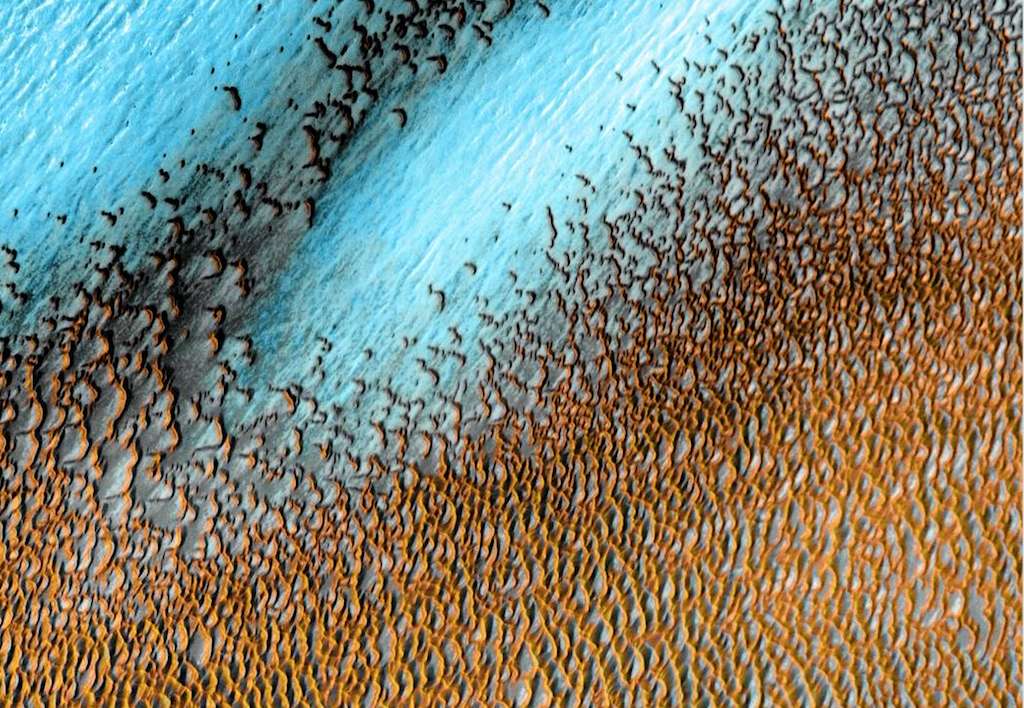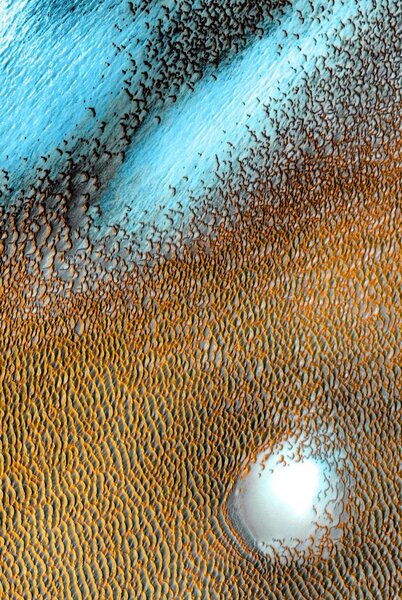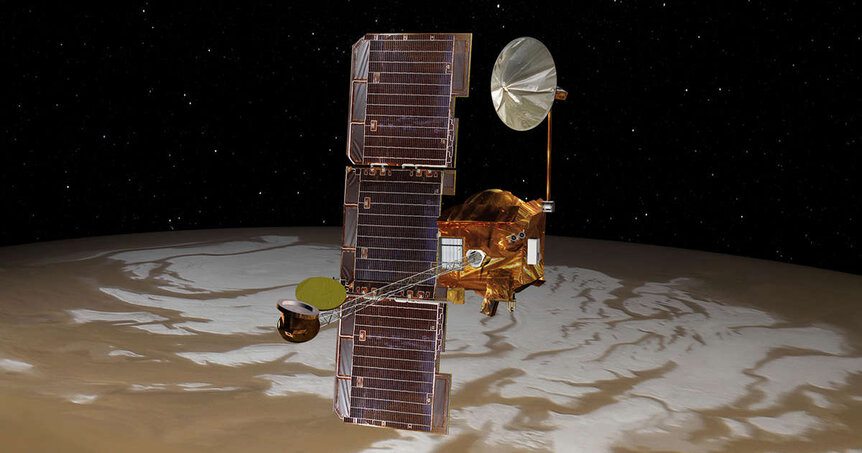Create a free profile to get unlimited access to exclusive videos, sweepstakes, and more!
NASA's Odyssey Orbiter snaps blue-tinted portrait of Mars' frozen polar cap

Marking the 20th anniversary of NASA's intrepid Mars Odyssey Orbiter spacecraft, the space agency has just released a vivid new composite image of the Red Planet's north pole using shots taken by the probe's Thermal Emission Imaging System camera.
This soothing photo was pieced together from a series of images originally taken of a slice of Mars' icy polar cap from December 2002 to November 2004, which spans a region nearly as big as the state of Texas. Technicians created a new false-color snapshot that reveals a vast ocean of dark-hued dunes ravaged by Martian winds and icy regions comprised of frozen carbon dioxide and H2O.
Areas emitting colder temperatures are depicted in bluer tints, with warmer geographic features indicated in sun-splashed yellows and oranges. This particular image covers an area some 19 miles wide.
Similar to Earth, the Martian polar regions are the most frigid places on the planet, with much of the ice sublimating directly back to gas during the Southern Hemisphere's summer, and temperatures plunging to minus 220 degrees Fahrenheit in wintertime.
NASA's Mars Odyssey Orbiter blasted off from Earth back on April 7, 2001 (hence the nod to Arthur C. Clarke and Stanley Kubrick's classic movie) and has become the agency's most hardy Martian spacecraft ever. It holds the record for the longest continually active spacecraft in orbit around another planet, having entered its orbital embrace on Oct. 24, 2001.
The spacecraft's main mission was to employ a complement of spectrometers and thermal imagers to detect past or present evidence of water or ice, and study Mars' complex geology and radiation profile.
Not only used as a current means of communication by NASA for its rover missions to the surface in the last decade, the robotic spacecraft has also transmitted over one-million thermal images of Mars back to Earth.
Mars Odyssey has served NASA well and has now been parked in a polar orbit since October 2019, where it will continue to operate until 2025 when its propellant will eventually be exhausted.
















